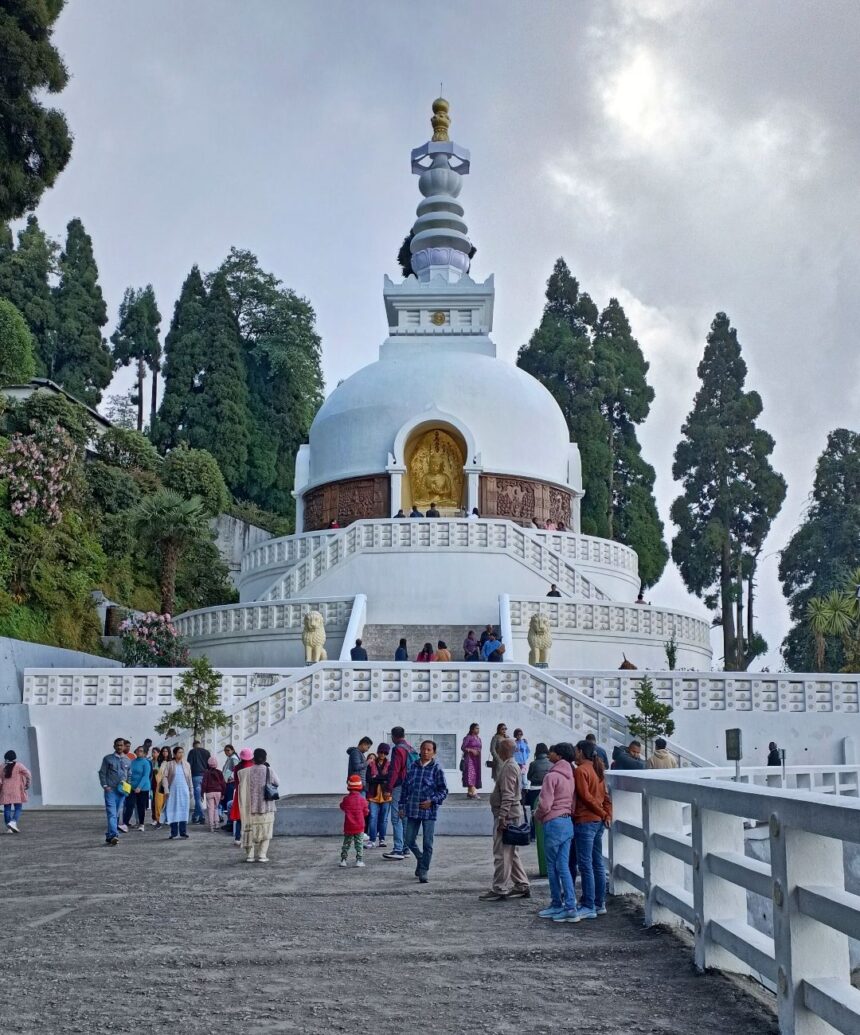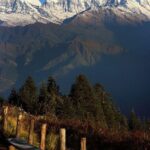Introduction
The World Peace Pagoda, also known as Shanti Stupa, is a symbol of peace, harmony, and spiritual reflection located on a hilltop in Pokhara, Nepal. Overlooking Phewa Lake and the Annapurna mountain range, this iconic Buddhist monument offers breathtaking views, spiritual ambiance, and cultural insights.
- Introduction
- History of World Peace Pagoda
- Fascinating Facts About World Peace Pagoda
- Timeline of World Peace Pagoda
- Significance of World Peace Pagoda
- 1. Spiritual Significance
- 2. Cultural Importance
- 3. Tourism & Economy
- 4. Environmental Awareness
- 5. Educational Role
- 6. Peace and Inspiration
- Observance & Cultural Activities
- Wishing at World Peace Pagoda
- Daily Life Impact
- FAQs About World Peace Pagoda
- Important Tips for Visitors
- Importance in Society
- Conclusion
For travelers seeking cheap vacation ideas with nature, culture, and spiritual experiences, the World Peace Pagoda is a perfect destination. It combines scenic beauty, meditation opportunities, and local cultural immersion, making it ideal for photographers, adventurers, and spiritual seekers alike.
This guide explores the history, fascinating facts, timeline, significance, observance, wishing, FAQs, daily life impact, and societal importance, presented in a human-friendly, engaging style.
History of World Peace Pagoda
Origins: Constructed by Buddhist monks from the Japanese Nipponzan-Myōhōji organization to promote world peace and harmony.
Construction Era: Built in the late 20th century, symbolizing Buddhist ideals of compassion, peace, and meditation.
Cultural Importance: Serves as a center for Buddhist teachings and interfaith harmony, attracting both pilgrims and tourists.
Modern Era: The pagoda is now one of Pokhara’s most visited attractions, featuring white-domed architecture, prayer flags, and statues of Buddha.
Fun Fact: The pagoda is strategically located to offer panoramic views of Pokhara, the Himalayas, and Phewa Lake, making it a favorite sunset and sunrise viewpoint.
Fascinating Facts About World Peace Pagoda
Breathtaking Location: Perched on a hilltop, offering 360-degree views of Pokhara Valley, Annapurna Range, and Fewa Lake.
Symbol of Peace: Built to promote global harmony and Buddhist teachings.
Architectural Style: Features a white-domed stupa with golden spires, surrounded by smaller stupas representing world peace.
Accessible by Trekking: Visitors can reach it via a moderate hike or short boat-ride combination, making it adventurous yet approachable.
Cultural Hub: Offers insights into Buddhist rituals, meditation, and prayer practices.
Photography Hotspot: Its location and architecture make it ideal for landscape, sunrise, and sunset photography.
Eco-Friendly & Serene: The surrounding forests and trails promote tranquility and ecological appreciation.
Timeline of World Peace Pagoda
Late 20th Century: Construction initiated by Japanese Buddhist monks.
1990s: Pagoda completed and opened to visitors.
2000s: Became a major tourist attraction and pilgrimage site.
Present: Continues to attract local devotees, international tourists, and photographers, symbolizing peace and spiritual reflection.
Significance of World Peace Pagoda
1. Spiritual Significance
The pagoda is a Buddhist pilgrimage site, where visitors meditate, offer prayers, and reflect on compassion, mindfulness, and global harmony.
2. Cultural Importance
It preserves Buddhist rituals, architecture, and teachings, providing visitors with insights into Nepalese and Japanese Buddhist traditions.
3. Tourism & Economy
Supports local businesses, including guides, trekking services, tea houses, and handicraft shops, contributing to Pokhara’s tourism-driven economy.
4. Environmental Awareness
The surrounding forested hill encourages eco-friendly trekking, wildlife appreciation, and clean tourism practices.
5. Educational Role
Visitors learn about Buddhist philosophy, meditation practices, and cultural heritage, fostering spiritual and cultural education.
6. Peace and Inspiration
Promotes a sense of inner calm, mindfulness, and appreciation for global harmony, inspiring both travelers and locals.
Observance & Cultural Activities
Buddhist Rituals: Daily prayers, offerings, and meditation sessions by monks and devotees.
Festivals: Special ceremonies during Buddha Jayanti and other Buddhist celebrations.
Trekking & Meditation: Visitors often trek to the pagoda at sunrise or sunset, engaging in personal reflection and spiritual practices.
Community Programs: Occasionally hosts cultural and educational programs promoting peace and harmony.
Wishing at World Peace Pagoda
Visitors often make wishes while meditating or walking around the stupa:
🕉️ “May peace and harmony prevail in the world and in my heart.”
🌸 “Wishing for happiness, compassion, and spiritual growth for all beings.”
🏞️ “May every view, every step, and every breath inspire mindfulness and gratitude.”
These acts connect travelers to the spiritual essence of the site and create a meaningful experience.
Daily Life Impact
The World Peace Pagoda affects tourists, locals, and society:
For Visitors: Offers spiritual reflection, adventure, and scenic inspiration.
For Locals: Generates income through guiding services, trekking support, and local hospitality.
For Society: Promotes peace, mindfulness, environmental awareness, and cultural preservation.
Trekking enthusiasts and photographers benefit from the serene environment, panoramic views, and cultural immersion.
FAQs About World Peace Pagoda
Q1: How do I reach World Peace Pagoda?
A: By trekking from Sarangkot or starting from Phewa Lake, or a combination of boat ride and hike.
Q2: What is the best time to visit?
A: Spring (March–May) and Autumn (September–November) for clear skies and pleasant temperatures.
Q3: Is the trek difficult?
A: Moderate, suitable for average fitness levels. Takes 2–3 hours from the base of the hill.
Q4: Are there accommodation options nearby?
A: Yes, Pokhara has budget hotels, guesthouses, and homestays for trekkers.
Q5: Can I take photographs?
A: Absolutely! The pagoda offers amazing panoramic views and architectural details perfect for photography.
Important Tips for Visitors
Wear comfortable trekking shoes for the hill ascent.
Respect local customs and dress modestly at the stupa.
Carry water, snacks, and sun protection.
Trek in the morning or late afternoon for better lighting and less crowd.
Maintain silence and mindfulness to honor the spiritual nature of the site.
Importance in Society
World Peace Pagoda serves as a spiritual, cultural, and economic landmark:
Spiritual Hub: Promotes peace, mindfulness, and Buddhist teachings.
Cultural Preservation: Protects architecture, rituals, and meditation practices.
Economic Support: Boosts local businesses and trekking services.
Environmental Awareness: Encourages eco-friendly tourism and conservation.
Educational Value: Offers insights into Buddhist philosophy, Nepalese culture, and spiritual reflection.
Conclusion
The World Peace Pagoda is more than a scenic viewpoint; it is a symbol of global harmony, inner peace, and spiritual inspiration. Affordable, accessible, and breathtaking, it offers visitors a unique combination of nature, adventure, and culture.
🕉️ Wishing for You: May your visit to the World Peace Pagoda inspire mindfulness, gratitude, and a sense of peace, letting every step and every view enrich your journey with spiritual and cultural fulfillment.








